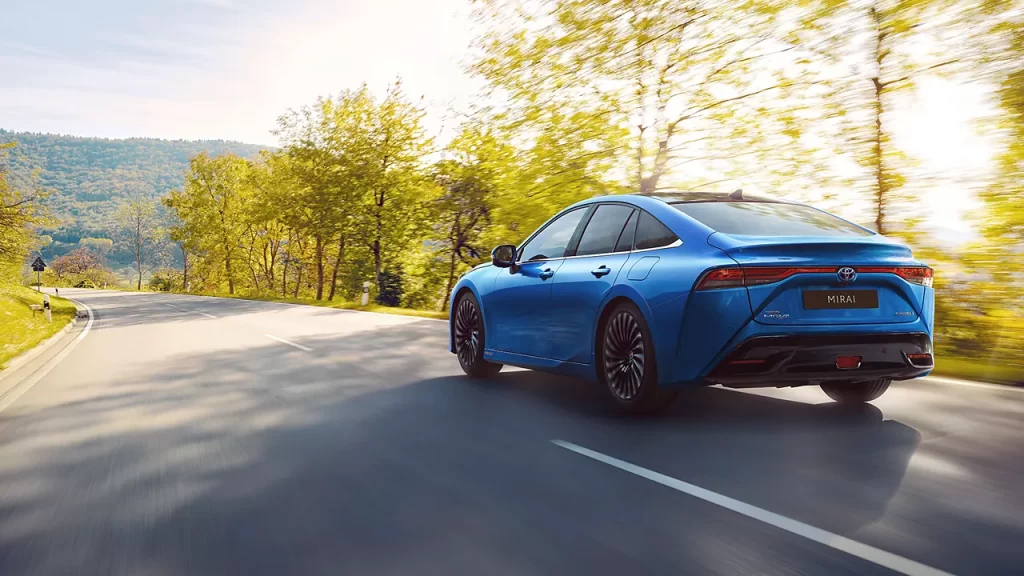As the world continues to shift towards greener mobility solutions, battery electric and fuel cell vehicles have emerged. Both offer advantages in terms of zero emissions and long driving ranges.
With hydrogen fuel cells, electricity is produced through an electrochemical reaction with oxygen in the car’s tank. The only byproduct is water, which makes these vehicles environmentally friendly.
1. Regenerative Braking
Regenerative braking is an important part of any electric car’s drive train. It turns the wheels into a generator when you apply the brakes, and produces electricity that charges the battery. This helps the EV to improve its fuel efficiency by reducing the amount of work that the engine has to do.
Traditionally, much of a vehicle’s kinetic energy is dissipated as wasted heat when it decelerates. But regenerative braking systems on hybrids and full-electric vehicles put this energy to better use by turning it back into electrical energy that can charge the car’s batteries for future driving.
Using regen braking also reduces wear on the regular friction brakes, which can extend their lifespan and save you money in maintenance costs. But the system can feel different than a conventional brake pedal, so it may take some practice to get used to it.
2. Fuel Cells
Stellantis has developed a solution that combines hydrogen fuel cells and electric battery technology in an FCEV. This technology allows for the vehicle to be refueled in just minutes and offers zero emissions.
Hydrogen is stored in a fuel cell along with oxygen from ambient air and the combination of these two materials produces electrical energy. The only byproduct is water vapor, which makes fuel cell cars completely clean.
One of the main concerns of these cars is that the refueling infrastructure is not as widespread as electric charging stations, but Honda recently unveiled an FCEV version of its popular CR-V with a range of up to 500 miles using a permanent H2 tank and six removable hydrogen capsules. It can be refueled in three minutes at still-hard-to-find hydrogen stations.
3. Lithium-Ion Batteries
With battery electric vehicles (EVs) gaining popularity in the automotive industry, it’s easy to overlook another alternative to ICEs that has the potential to take zero-emission driving to new heights: fuel cells.
Lithium batteries consist of lithium-ion cells surrounded by protective circuitry. When charging, the lithium ions move between the cathode and anode, generating electrons that are used to power devices like phones and laptops.
These batteries can be made using different chemistries including lithium nickel cobalt aluminum oxide (NMC), lithium iron phosphate (LFP) and lithium titanate. The latest technology in lithium-ion batteries uses an atomically engineered design to make the cells more efficient, so they can charge and discharge more quickly. It’s also safer to use and has a longer lifecycle. This type of battery is currently found in some hybrids and EVs.
4. Electric Motors
When most people think of an electric vehicle, they imagine a battery-powered model that can travel long distances and has impressive acceleration. However, transportation experts have high hopes for a different drive technology that could provide an emission-free alternative without long charging times: the hydrogen drive.
Hydrogen fuel cells generate electricity to run electric motors through a process that produces water vapor as the only by-product. Hydrogen can be produced using renewable energy sources and stored in large tanks.
One example of a hydrogen vehicle is the 2023 Hyundai Nexo, which features an electric-hydrogen hybrid drive that combines a 95-kW fuel cell stack with a 40-kWh battery pack to produce 161 horsepower and 291 pound-feet of torque. The car can also be refueled in a few minutes with hydrogen from a portable tank or at a hydrogen station.
5. Hybrid Vehicles
When a hybrid vehicle is in motion, the system recaptures energy through regenerative braking and uses it to charge its battery. This saves fuel, because conventional brakes convert kinetic energy into unusable friction heat.
The electricity then flows to either the electric motor, which drives the wheels, or into a buffer battery that stores energy until it is needed for driving. This type of energy storage allows the gasoline engine to operate at a lower load and less efficiently, which also helps save fuel.
Hybrid vehicles are more expensive than traditional cars, and their energy cost savings can hardly offset this price difference. Thus, rational behavior decision theory would predict that hybrid vehicles will not be widely adopted. However, many companies are exploring new paths with innovative hybrid technology.






More Stories
The True Cost of Not Having Business Insurance
A Technical Analysis of Advanced Safety Features in Modern Vehicle Modifications
SUV Modification Tips for Novice Mechanics